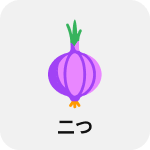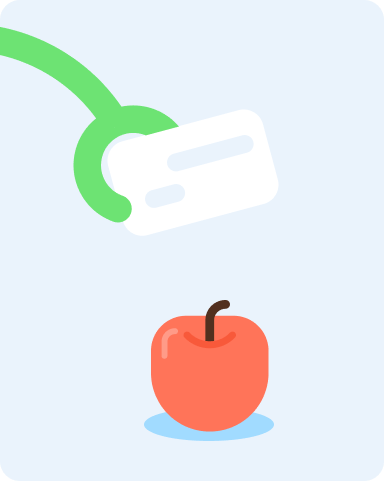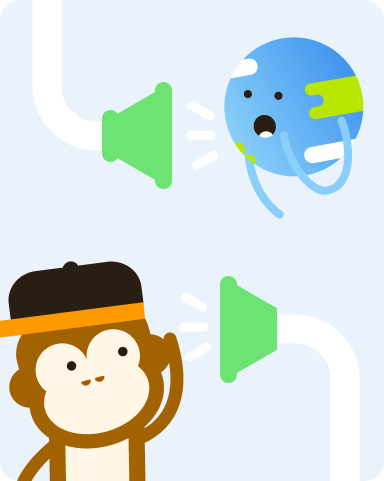Learn Tagalog
with Ling
Use our comprehensive lessons, conversation topics, and more to connect with those closest to you
Used by 5M Ling Learners




Why Learn Tagalog With Ling?
Interactive Lessons
Improve your Tagalog pronunciation with feedback from our smart chatbot. Listen to audio from native Tagalog and Filipino speakers.
Gamified Learning
Gamification and mini-games keep the Tagalog and Filipino learning process fresh and engaging.
Well-Rounded Experience
Finish Tagalog lessons in 10 minutes that touch on all four language skills: reading, writing, speaking, and listening.
Team Who Cares
Behind the scenes is a team of Tagalog and Filipino speakers who are passionate about sharing their language and culture.

Master 4 language skills in 10 minutes a day




1-3 minutes to learn new vocabulary
3-5 minutes to review
3-5 minutes to test your listening skills
Done!
Join over 5 million language learners for a 100% guaranteed amazing language experience
Frequently asked questions about learning Tagalog
Embarking on a language-learning journey can be both exciting and daunting, especially when faced with a language as unfamiliar as Tagalog. However, this Asian language can actually be considered relatively easy for English speakers. One of the key contributors to Tagalog's learner-friendly nature is its vocabulary, which surprisingly shares many similarities with English, Spanish, and other languages. Additionally, unlike most Asian languages, Tagalog utilizes the standard Latin alphabet, significantly simplifying the learning process by reducing the need to learn a new writing system.
Nevertheless, it is important to note that Tagalog's grammar can present challenges for English speakers. For instance, it typically follows a Verb-Subject-Object (VSO) word order. Furthermore, Tagalog allows for sentence structures that begin with adjectives, offering a touch of flexibility and creativity to one's expressions.
However, it is crucial to recognize that numerous factors, including learning style, native language, and motivation, will influence the ease with which individuals achieve fluency in Tagalog. As with any language, attaining proficiency in Tagalog requires considerable effort and dedication.
Here are four key points to bear in mind if you want to ease your Tagalog learning journey:
-
Grammar: Verb-Subject-Object
-
Vocabulary: Most Tagalog words are derived from a mix of Spanish and English
-
Speaking/Listening: The spelling of words corresponds closely to their pronunciation
-
Reading/Writing: Similar to the Latin alphabet with the exceptions of the two letters Ng and Ñ
Learning Tagalog can be a personalized journey tailored to your preferences and learning style. The key to achieving fluency lies in consistency and utilizing suitable study materials. Whether you dedicate 15 minutes or 2 hours each day, practicing Tagalog words and phrases daily will yield excellent results.
To make your Tagalog learning journey easier, we have some valuable tips and techniques to help you efficiently master the language.
-
Focus on building a strong foundation in vocabulary and grammar! These are the stepping stones to speaking Tagalog fluently. By familiarizing yourself with basic vocabulary and understanding grammar structures, you'll have a solid starting point.
-
Immersing yourself in the Tagalog language is essential! Dive into the vibrant world of Filipino music, movies, TV shows, and conversations with native Tagalog speakers. Trust us! These immersive experiences will accelerate your progress and improve your speaking skills sooner than you might expect.
-
Leverage language learning apps! Educational resources like the Ling app offer interactive lessons, vocabulary exercises, and practice opportunities for pronunciation and writing. Take advantage of these resources to enhance your learning experience!
-
Consistency is key! To see improvement in your Tagalog skills, aim to dedicate at least 15 to 30 minutes every day to reviewing Tagalog words or listening to the language. By maintaining a regular learning schedule, you'll reinforce what you've learned and make steady progress.
Consider finding a language exchange partner! Connecting with someone who speaks Tagalog can be immensely beneficial. Engaging in conversations with a native speaker will enhance your listening and speaking skills while providing an opportunity to practice in a real-life context.
Learning Tagalog online opens up a world of possibilities with a ton of resources at your fingertips! Check out these informative points:
-
Online courses: Many websites and apps offer Tagalog courses suited to your interests and skill level. Want a pro tip? Many learners find it super effective to use multiple resources together. And Ling is an excellent Tagalog learning app to make your journey more engaging with its comprehensive Content, user-friendly interface, and gamified lessons!
-
Language learning communities: Don't miss out on joining a community of fellow Tagalog learners and native speakers. It's a great way to interact, practice, and gain insights from those on the same language journey as you.
-
YouTube videos and podcasts: Get ready to binge-watch and listen! Dive into the treasure trove of Tagalog resources on YouTube and podcasts. You'll discover content for beginners, intermediates, and advanced learners, adding that extra spice to your daily practice.
-
Online tutors: Need some one-on-one guidance? Online tutors are ready to help! They're native speakers who can provide personalized instruction and valuable feedback to level up your Tagalog skills.
-
Track your progress: Keep tabs on how far you've come! Most learning platforms offer cool features to track your stats and achievements. It's a fantastic way to identify areas where you might need more practice and attention.
-
Reward yourself: Treat yourself along the way! Learning online at your own pace is a journey, so it's important to stay motivated. Once you complete a lesson or hit a major milestone, indulge in something you love as a well-deserved reward.
With the vast array of online resources, engaging with language communities, and incorporating tracking and rewards into your learning routine, you'll rock your Tagalog journey and see those language skills soar!
Here are some tips to get started on this rewarding experience for your child:
-
Start early: Introduce Tagalog to your child as soon as possible. Children have a natural ability to absorb new languages, making it easier for them to learn. Take advantage of this window of opportunity!
-
Speak Tagalog at home: Help your child immerse in the language and get used to it by speaking to them in Tagalog. When they hear you using Tagalog words and expressions, they'll naturally start picking them up and using the language themselves.
-
Use interactive tools: Kids love interactive learning! Incorporate videos, games, and flashcards into their Tagalog learning routine. These engaging resources make the process fun and enjoyable.
-
Read Tagalog children’s books: These books usually provide a simple and entertaining way to expand their vocabulary and language skills.
-
Watch Tagalog cartoons: Let your child practice Tagalog while watching animated shows. They'll enjoy the fun conversations and quickly catch on to the language.
-
Practice regularly: Consistency is key! Encourage your child to practice Tagalog regularly. Make the learning experience enjoyable so they eagerly look forward to their next lesson rather than feeling pressured.
Teaching your child Tagalog is a gradual process that requires patience and support. Over time, with consistent practice, they can become fluent in Tagalog and reap the benefits of bilingualism.
Achieving fluency in the Tagalog language can take several months or even years. It depends on factors such as the learner's language background, learning style, motivation, and time spent learning.
According to the US Foreign Service Institute, it is a category III language that may take an estimated 1100 hours of study for English speakers to achieve intermediate proficiency. If an individual is dedicated to learning Tagalog, it may take 1-2 years of consistent practice to reach a comfortable level of proficiency.
Remember that achieving fluency is a gradual process that takes a lot of effort, time, and practice. The time it takes to learn Tagalog will depend on individual circumstances and the learner's goals.
Did you know that the Philippines is made up of 7,640 islands, each with its own unique languages and dialects? Among them, Tagalog took the spotlight and became widely spoken. However, to make sure that all languages in the Philippines were represented, Tagalog went through some refinements and evolved into what we now know as Filipino.
In a nutshell, Filipino is the standardized version of Tagalog, and the grammar rules of these two languages are pretty much identical. Today, Tagalog continues to be spoken by a whopping 20 million people across the Philippines. And guess what? There are even 40 million native Tagalog speakers scattered around the world.
Now, here's an interesting tidbit: while you'll encounter various regional dialects of Tagalog, there are distinct accent and tonal differences. For example, Batangas Tagalog has its own flair, different from the Tagalog spoken in Manila. Tagalog also shares a close bond with other languages like Ilocano, Kapampangan, Visayan, and Pangasinan, collectively known as the Bikol languages.
Whether you're on a quest to learn Filipino or Tagalog, having a fantastic language-learning app is a game-changer. That's where Ling comes in! With the Ling app, you can access top-notch language lessons covering all four language skills—speaking, listening, reading, and writing. It's like having a language tutor in your pocket!















































